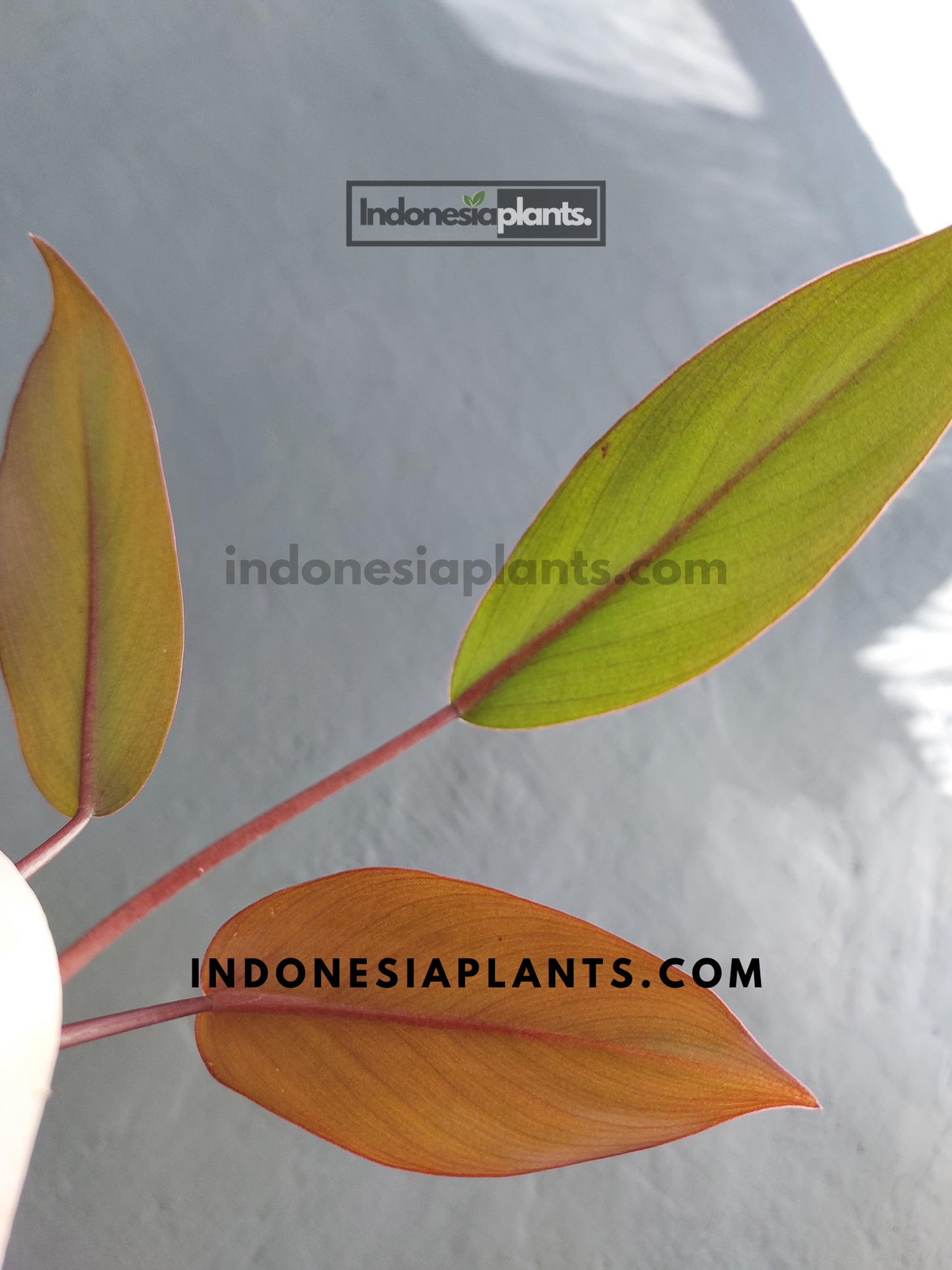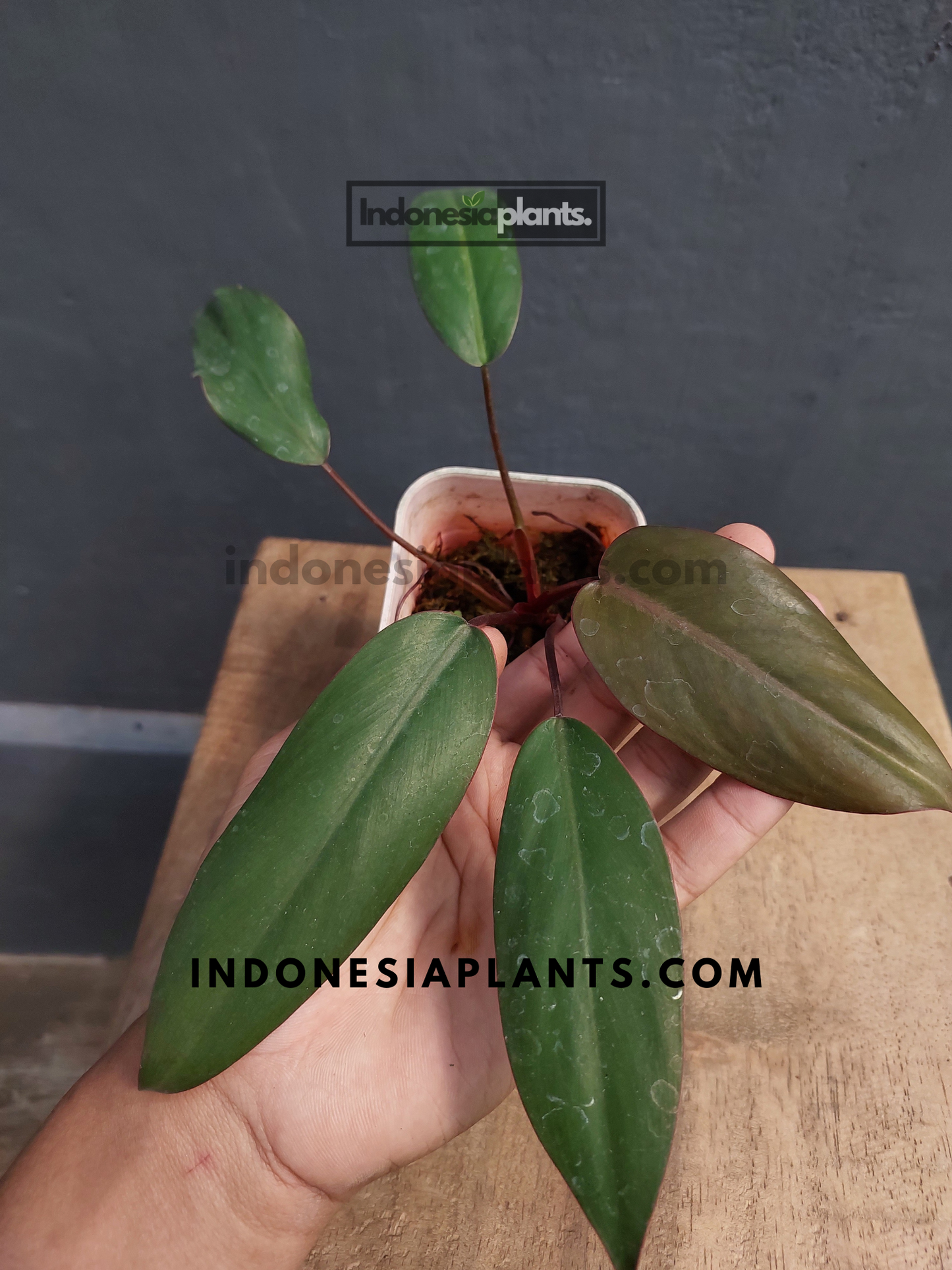indonesiaplants
Philodendron Dark Lord
Philodendron Dark Lord
Couldn't load pickup availability
See photos for reference of the plant features only. Sent to you more likely as featured with descriptions below:
Minimum of 3 leaves
Rooted not cuttings
Philodendron Dark Lord: Striking Dark Foliage for a Bold Statement
Philodendron Dark Lord is a mysterious and captivating variety that stands out with its dark, almost black foliage. The deep maroon leaves provide a dramatic contrast to lighter-colored plants, making this an ideal choice for plant collectors looking for something unique and striking to showcase in their collection.
Key Features of the Dark Lord:
- Dark, Rich Foliage: The deep maroon to black leaves give it an almost mystical and bold appearance.
- Resilient Growth: Despite its dramatic look, this plant is hardy and can thrive in various indoor environments.
- Exotic Beauty: Its dark leaves are a unique contrast to the more traditional green foliage of other Philodendrons.
Palette
Think deep cinema tones with luxe highlights. Philodendron ‘Dark Lord’ typically presents dark, inky green to burgundy-near-black mature leaves, contrasted by fresher copper to olive new growth. Petioles often carry warm, reddish notes, and the abaxial (underside) can glow wine-red in the right light. The finish is satin to semi-gloss—enough sheen to throw a soft highlight without mirror glare. As the canopy matures, you get a natural gradient: ember-tinged new leaves fading into dramatic, moody panels. It’s a color story that elevates neutrals, flatters pale timber, and pops against limewash or microcement walls.
Materials
Choose textures that echo the plant’s modern edge. Matte stoneware (sand, ecru, charcoal) frames the dark blades. Raw oak or ash warms the palette; blackened metal, smoked glass, and honed travertine add sophisticated contrast. Keep surfaces low-gloss so the leaves, not the planter, take the spotlight. If styling on a console, introduce one tactile prop—linen-bound books, a ceramic form, or a travertine tray—for quiet balance.
Light
Place in bright, diffused daylight—east-window glow or a luminous zone behind sheers. Even luminance preserves the deep tones while keeping new leaves smooth and confident. Harsh midday beams can warm edges on tender tissue; filter direct sun to maintain that velvety look. For photos, angle side light across the blade to carve a subtle highlight down the midrib and let the burgundy undertones whisper at the margins. If internodes lengthen, increase overall brightness (still filtered) rather than fertilizer.
Scale
Indoors, Dark Lord develops into a poised, upright presence: elongated, paddle-like leaves arranged along sturdy petioles. Train a leader on a slim moss pole, coco totem, or a flat cedar board and the plant stacks into a tall, disciplined column that reads sculptural without hogging floor space. Typical home conditions support steady sizing; leaf length and width expand as the apex lives in the brightest safe zone of your room.
Rhythm
- Water cadence: When the top 2–3 cm (≈1 in) of mix dries, water thoroughly and allow full drainage. A calm, repeatable rhythm keeps margins clean and color saturated.
- Root medium: Oxygen-forward aroid blend—~40% chunky orchid bark, 25% coco fiber/coir, 20% pumice/perlite, 10% horticultural charcoal, plus a modest sphagnum buffer. Air first, even moisture second.
- Climate: Comfortable at ~18–29 °C (65–85 °F) and ~50–70% RH with gentle airflow (avoid AC blasts/heater streams).
- Nutrition: Light feeding (¼–½ strength) during active months for steady growth and rich tonal depth.
- Training: Secure each node to the support with soft ties; rotate a quarter-turn every two weeks for balanced exposure.
- Grooming: Dust a few leaves weekly with a soft cloth; remove spent sheaths to keep the crown crisp.
Styling Notes
Stage Dark Lord as the “shadow” in a vignette. Pair with one lighter, textural companion—velvety Anthurium or a silver-brushed Philodendron brandtianum—so contrast feels intentional. Charcoal or sand planters amplify drama; pale backdrops let the leaf silhouette draw clean lines. In content shoots, keep one negative-space window behind a featured leaf so the profile reads clearly at a glance.
Troubleshooting Quick Read
- Long gaps / smaller leaves: Raise overall brightness (filtered) and keep the stem close to the support.
- Brown tips or edge crisping: Often late watering or very dry air—tighten cadence, consider a mild humidity bump.
- Dull new leaves: Check light quality first; resume light feeding only after brightness is optimized.
Kindly reach out to us at indonesiaplants@gmail.com if you have difficulties in your purchase or have any questions.







